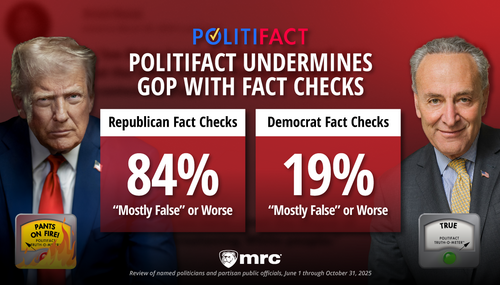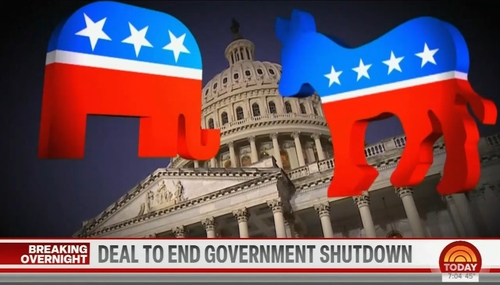New York Times political reporter Astead Herndon’s “Political Memo” Wednesday hails from a Trump rally in Fayetteville, N.C., on Monday (in the district that held a special congressional election won by Republican Dan Bishop the next day), under a loaded headline that suggested both Trump and his rallygoers were racist: “To Message of Racial Division and Fear, Crowd Responds With Cheers.”
The online headlines made the same point: “With the Faithful at Trump’s North Carolina Rally: ‘He Speaks Like Me’ -- Two months after his rally there produced “send her back” chants, the president brought identity politics back to the state."
Herndon began with a sketch of a “superfan” who had traveled from California to see Trump, then went on to characterize what he clearly saw as the president’s harmful and racist invective (click “expand”):
“North Carolina has released thousands of dangerous criminal aliens into your communities and you see it,” Mr. Trump said. “The charges against these free criminals include sexual assault, robbery, drug crimes and homicide. Murder!”
(....)
Two months after Mr. Trump’s last North Carolina rally, where supporters unleashed a “send her back” chant about a Somali-American congresswoman that was immediately denounced as racist, the president did what the president often does. On Monday night, rather than deliver a speech tailored only to conventional topics like a crucial special congressional election in North Carolina on Tuesday, or about economic numbers that White House officials have been trying to tout, Mr. Trump brought his signature brand of identity politics -- steeped in racial division and fears of white Christian replacement -- to a crowd that was eager to embrace those themes.
They cheered loudly, urging Mr. Trump on, as he talked about mass deportations, “foreign refugees” overrunning communities and unproven allegations of voter fraud in California. They booed on cue with every mention of the Democratic enemies, all women or people of color: House Speaker Nancy Pelosi; Hillary Clinton; former President Barack Obama; and the group of freshman congresswomen nicknamed “the squad.” Democrats were branded the “America-hating left.”
In conversations with more than a dozen attendees before and after the rally, they made clear that their support for the president was not in spite of his inflammatory rhetoric, but because his chosen targets often match their own.
Herndon painted the rallies as political powder-kegs:
But while Mr. Trump’s events are often known for the drama that unfolds inside -- the chanting, the propensity for inflammatory remarks from speakers, the occasional scuffle among protesters, and the bombastic words of the president himself -- the rally does not encompass the entire experience....
Reporter Annie Karni laid out similar tropes to characterize Trump’s speech to a conference commemorating black colleges and universities, in this case inserting racial allegations where none were brought up: “Trump Glosses Over Taunts to Focus on Black Gains”:
President Trump on Tuesday made a pitch for African-American support to an audience of black educators, emphasizing the economic gains that have been made since he became president and glossing over a summer of racial taunts aimed at Democratic lawmakers of color.
Why would Trump bring it up at all? She continued:
Speaking to a National Historically Black Colleges and Universities Week conference in downtown Washington, Mr. Trump seemed to make the case that economic gains that benefited African-Americans would prove more important to voters of color than any of his tweets.
Karni gave Trump credit for some support for blacks, seemingly through gritted teeth (click “expand”):
Since the beginning of Mr. Trump’s presidency, the administration has, in fact, made an effort to support historically black schools, increasing investment in their programs by 14.3 percent....
Leaders of the schools at first eyed Mr. Trump’s promise of support for their institutions with some skepticism and faced blowback in the opening days of the Trump administration for meeting with the president in the Oval Office. During the 2017 meeting, Kellyanne Conway, counselor to the president, tucked her feet under her as she perched on the couch in a childlike posture that was criticized as signaling disrespect. Ms. Conway later said she was simply positioning herself to take a group photograph.
Karni took care to pair every instance of Trump using the government to help black institutions with a reminder of his racially charged past statements:
But Mr. Trump’s support for criminal justice reform and educational institutions that traditionally have been paths to advancement for black students has been muddied by his own racial comments, as well as his decades-long pattern of exploiting racial tensions.
Like her colleague Herndon, she painted Trump as attacking minority lawmakers not for their radical leftism but solely on skin color:
Mr. Trump has made Twitter attacks against lawmakers of color, from the so-called squad of Democratic congresswomen to Representative Elijah J. Cummings, central to his re-election strategy.
(....)
Mr. Trump made no reference to those fights in his remarks on Tuesday, or about how he labeled lawmakers like Mr. Cummings as racists when he was attacked.
Again, why would he?




